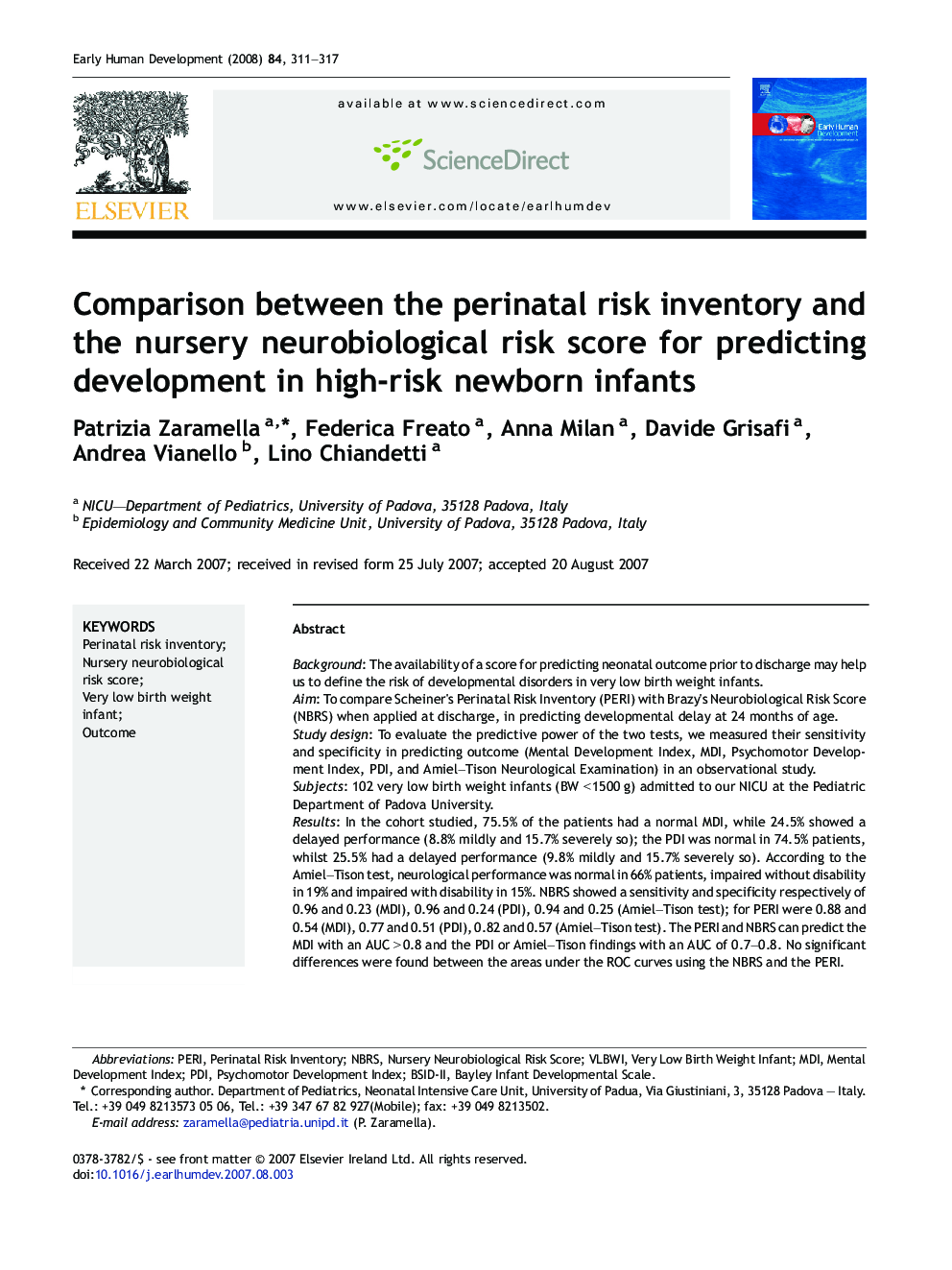| Article ID | Journal | Published Year | Pages | File Type |
|---|---|---|---|---|
| 3917618 | Early Human Development | 2008 | 7 Pages |
BackgroundThe availability of a score for predicting neonatal outcome prior to discharge may help us to define the risk of developmental disorders in very low birth weight infants.AimTo compare Scheiner's Perinatal Risk Inventory (PERI) with Brazy's Neurobiological Risk Score (NBRS) when applied at discharge, in predicting developmental delay at 24 months of age.Study designTo evaluate the predictive power of the two tests, we measured their sensitivity and specificity in predicting outcome (Mental Development Index, MDI, Psychomotor Development Index, PDI, and Amiel–Tison Neurological Examination) in an observational study.Subjects102 very low birth weight infants (BW < 1500 g) admitted to our NICU at the Pediatric Department of Padova University.ResultsIn the cohort studied, 75.5% of the patients had a normal MDI, while 24.5% showed a delayed performance (8.8% mildly and 15.7% severely so); the PDI was normal in 74.5% patients, whilst 25.5% had a delayed performance (9.8% mildly and 15.7% severely so). According to the Amiel–Tison test, neurological performance was normal in 66% patients, impaired without disability in 19% and impaired with disability in 15%. NBRS showed a sensitivity and specificity respectively of 0.96 and 0.23 (MDI), 0.96 and 0.24 (PDI), 0.94 and 0.25 (Amiel–Tison test); for PERI were 0.88 and 0.54 (MDI), 0.77 and 0.51 (PDI), 0.82 and 0.57 (Amiel–Tison test). The PERI and NBRS can predict the MDI with an AUC > 0.8 and the PDI or Amiel–Tison findings with an AUC of 0.7–0.8. No significant differences were found between the areas under the ROC curves using the NBRS and the PERI.Conclusions:In assessing the prognosis for individual babies, the physician can choose either the PERI or the NBRS to predict PDI, MDI or Amiel–Tison performance.
